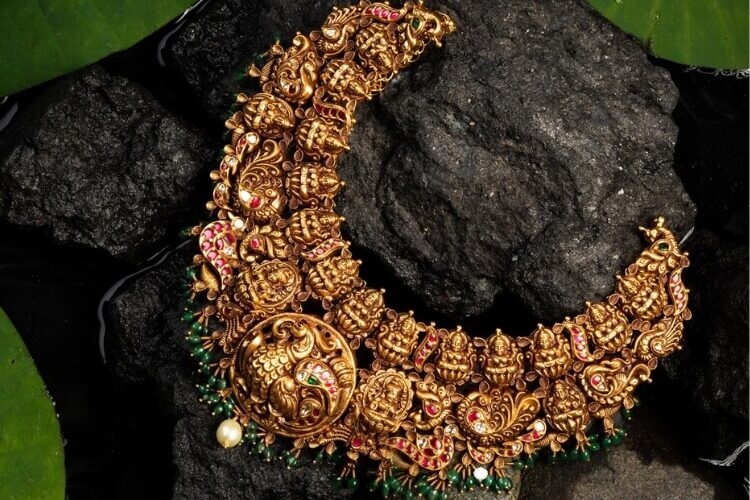The world of antique gold necklaces offers a treasure trove of history, beauty, and artistry. A true gem from the past holds not only aesthetic appeal but also cultural significance and historical value.
But how do you ensure that what you hold in your hands is genuine and from the era it purports to belong to? This guide will lead you through the journey of identifying and dating an antique gold necklace.
Identifying Authenticity
When we speak of antique gold necklaces and vintage jewelry, we’re diving into a rich tapestry of styles that span centuries and continents. Here are some essential tips to help you determine whether a piece is antique or vintage-inspired:
Hallmarks and Markings
One reliable method for authenticating a gold necklace is by examining its hallmarks. These are small inscriptions or stamps on the jewelry.
It indicates its metal content, goldsmith marks, and sometimes the year of its creation. These tiny marks serve as fingerprints of authenticity and are critical to the identification process.
Understanding hallmarks requires familiarity with different regional markings and standards. But, with study and experience, deciphering these can become second nature.
Material and Craftsmanship
The feel and look of real gold set it apart from less precious metals. Antique pieces showcase craftsmanship that often cannot be replicated with modern techniques. Pay close attention to the wear patterns, patina, and intricate workmanship that are indicative of period pieces.
Examination of Clasps and Closures
Clasps and closures often evolve with fashion trends, making them useful in dating a piece. For example, the spring ring clasp wasn’t used until the 20th century. Studying the evolution of such components can narrow down the timeframe in which a piece was made.
Jewelry Dating Techniques
Once you’ve determined that a piece is genuinely antique, the next step is to determine its age. Here are some ways to help pinpoint the era in which your necklace was created:
Historical Context and Fashion Trends
By aligning your piece with historical events and prevalent fashion trends, you can often deduce the period it belongs to. For instance, during wartime, certain materials might have been scarce. This affects the style and designs of jewelry from that era.
Style and Design Elements
Certain design elements are emblematic of particular periods. For example, geometric patterns might suggest the Art Deco period.
While naturalistic forms could imply an Art Nouveau origin. The designs etched into the essence of an antique gold necklace are pivotal for dating the piece.
Researching Provenance and Documentation
Occasionally, a piece comes with documentation or provenance, which significantly aids in the dating process. Provenance can include the original receipt, manufacturer’s catalogs, or photographs of the piece being worn in a certain era. All of this can provide undeniable context for your historical detective work.
Common Mistakes to Avoid
While enthusiasm for the pursuit of antiques is commendable, it’s essential to be cautious of common mistakes. Overreliance on one indicator, ignoring wear patterns, or being fooled by reproductions are all pitfalls that can lead you astray. Always cross-verify your findings and seek expert opinion when in doubt.
Identify Antique Gold Necklace with this Guide
Engrossing and educational, the endeavor of identifying and dating an antique gold necklace is a fulfilling one that deepens your connection with the past. This brief guide aims to serve as a starting point for your explorations in the world of vintage jewelry. Remember to keep sharp eyes, rely on verified information, and always cherish the learning process.
Is this article helpful? Keep reading our blog for more.






Add comment